1lumen selects and reviews products personally. We may earn affiliate commissions through our links, which help support our testing.
ThruNite T1S Review
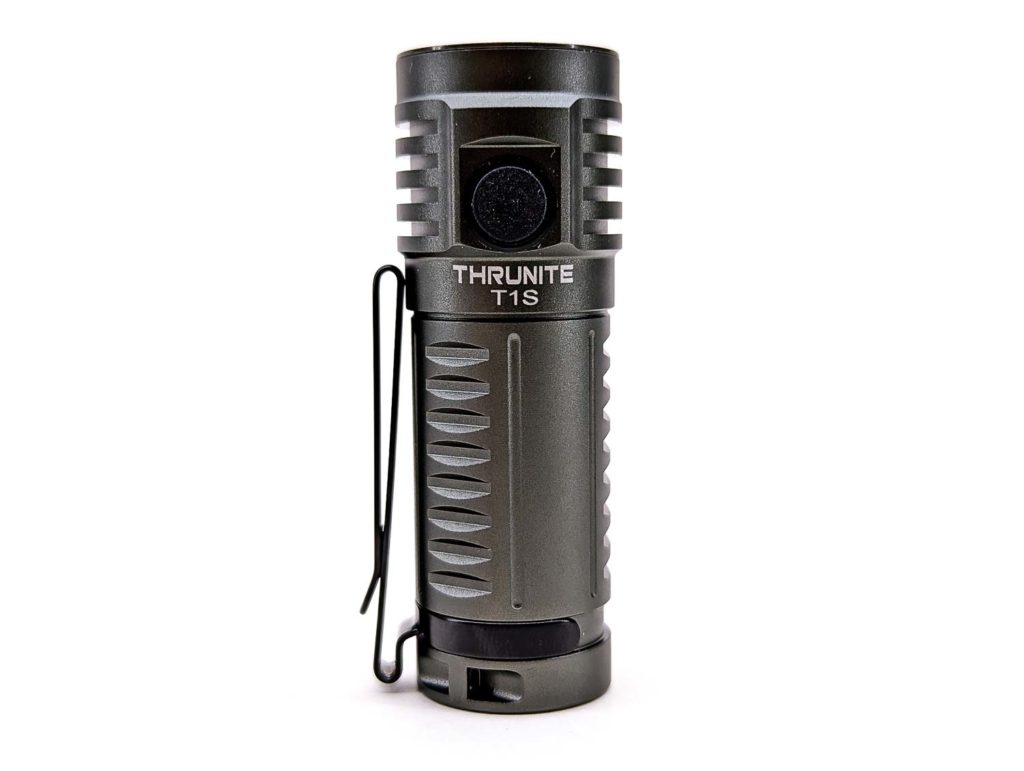
ThruNite T1S specifications
| Brand/model | ThruNite T1S |
|---|---|
| Category | Best small flashlight, EDC flashlight |
| LED | Luminus SST-40 |
| Max. Lumens | 1,212 Lumens |
| Max. Beam intensity | 8,460 cd |
| Battery config. | 1*18350 |
| Onboard charging | USB-C |
| Modes | 5 |
| Blinkies | Strobe |
| Reflector | TIR optics |
| Waterproof | IPX8 |
| Review date | January 2022 |
Introduction:
ThruNite has been in operation since 2009 and has put out some very nice flashlights. In fact, my very first “nice” headlamp was a ThruNite TH20 which has served me faithfully for the past 5 years. I feel like ThruNite products sit in a comfortable “in between” segment: they’re not ultra-budget lights that skimp on features, but they usually don’t break the bank either. Overall, they provide a good mix of value and performance.
Up for review today is the T1S model, an update to the ThruNite T1. It’s a compact EDC-style flashlight that is right up my alley – small, bright, functional… I think there’s going to be a lot to like in this one.
Package quality.
The ThruNite T1S arrived in a fairly plain but quite sturdy 2-piece cardboard carton. Inside, the T1S was nestled snugly into dense foam, beneath which was a good assortment of accessories. In all, the box contained:
- ThruNite T1S
- Battery (inside)
- Spare o-rings (2)
- Spare USB covers (2)
- Charging cable
- Pocket clip
- Lanyard
- Manual
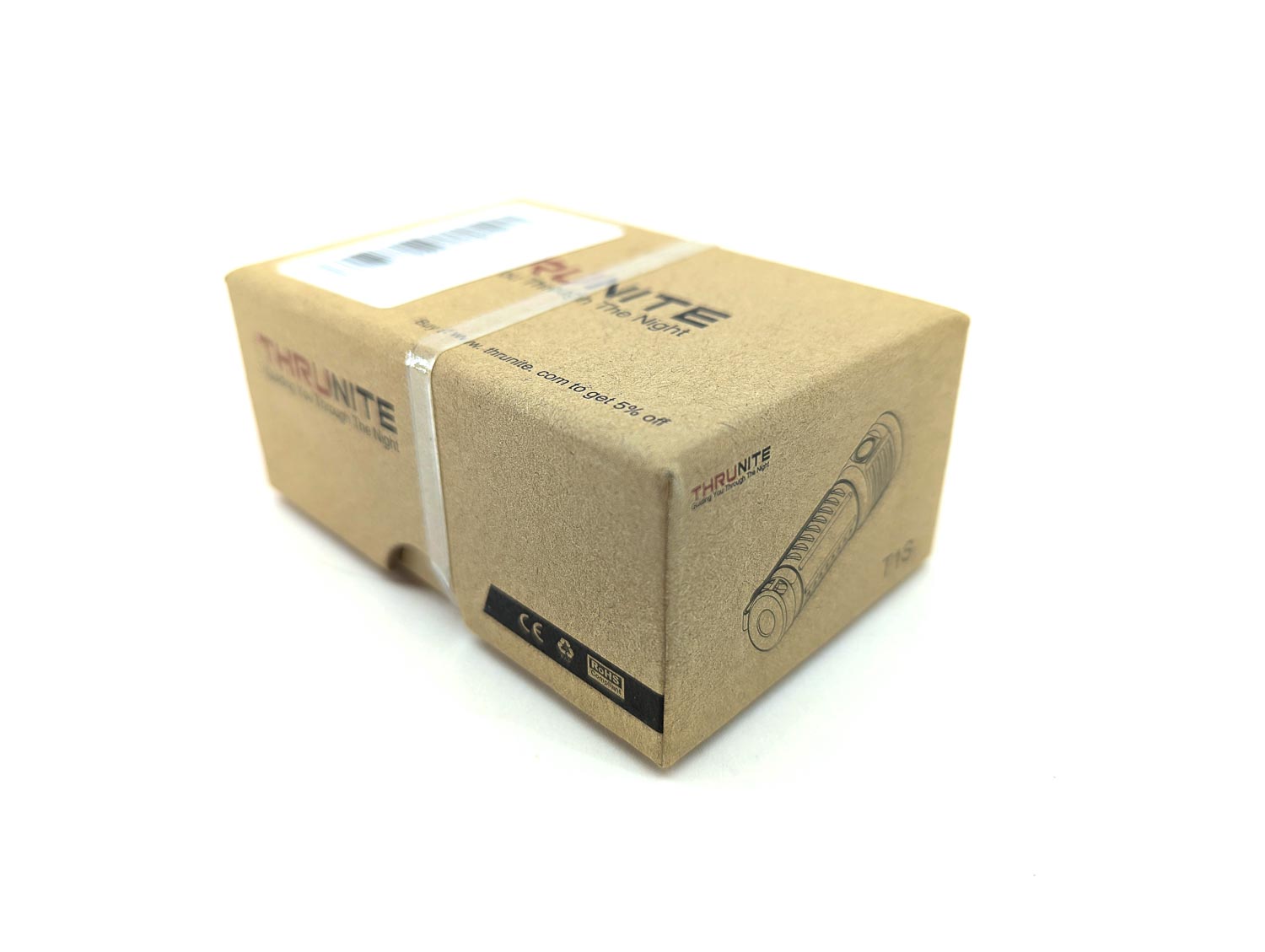
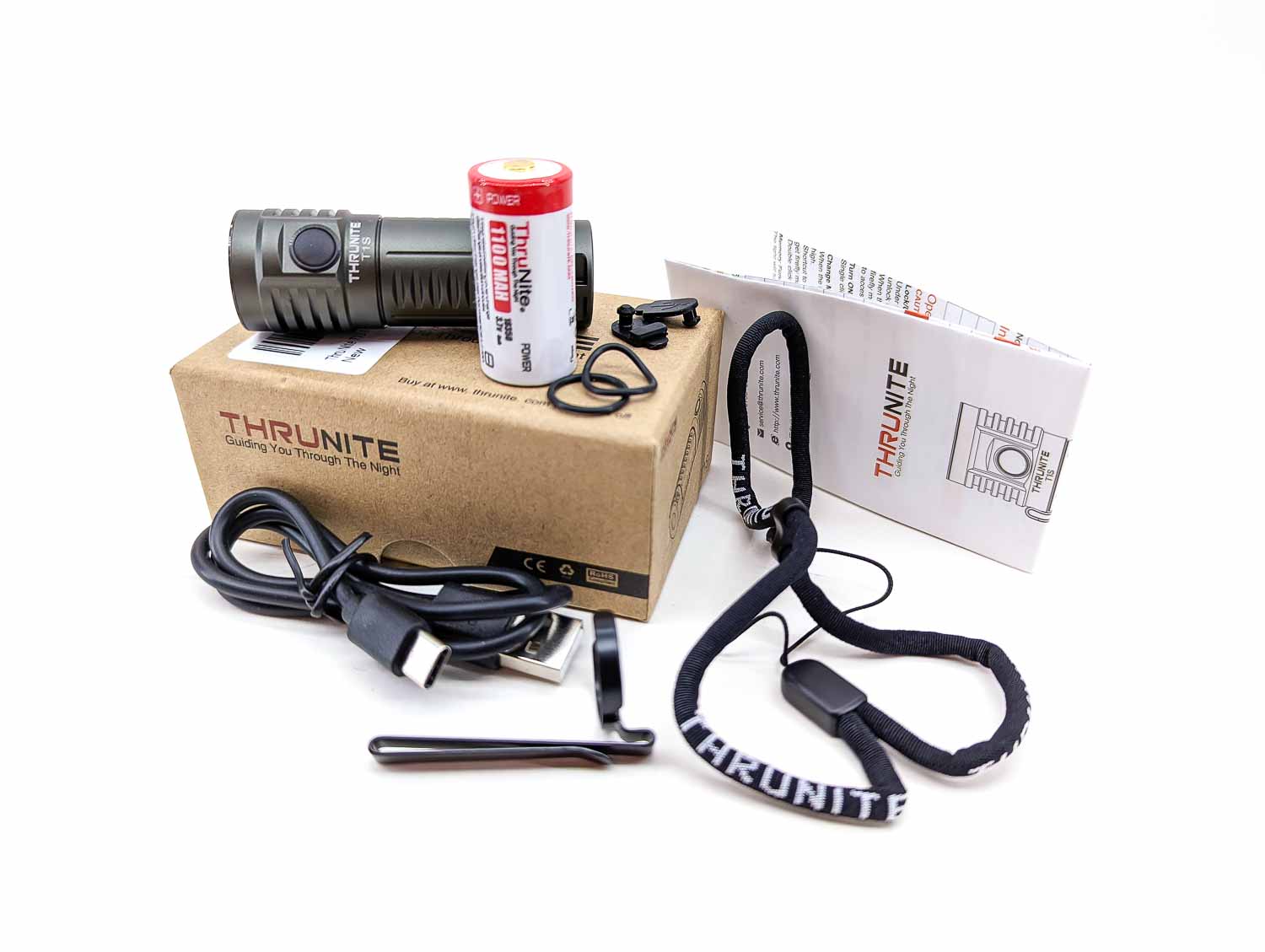
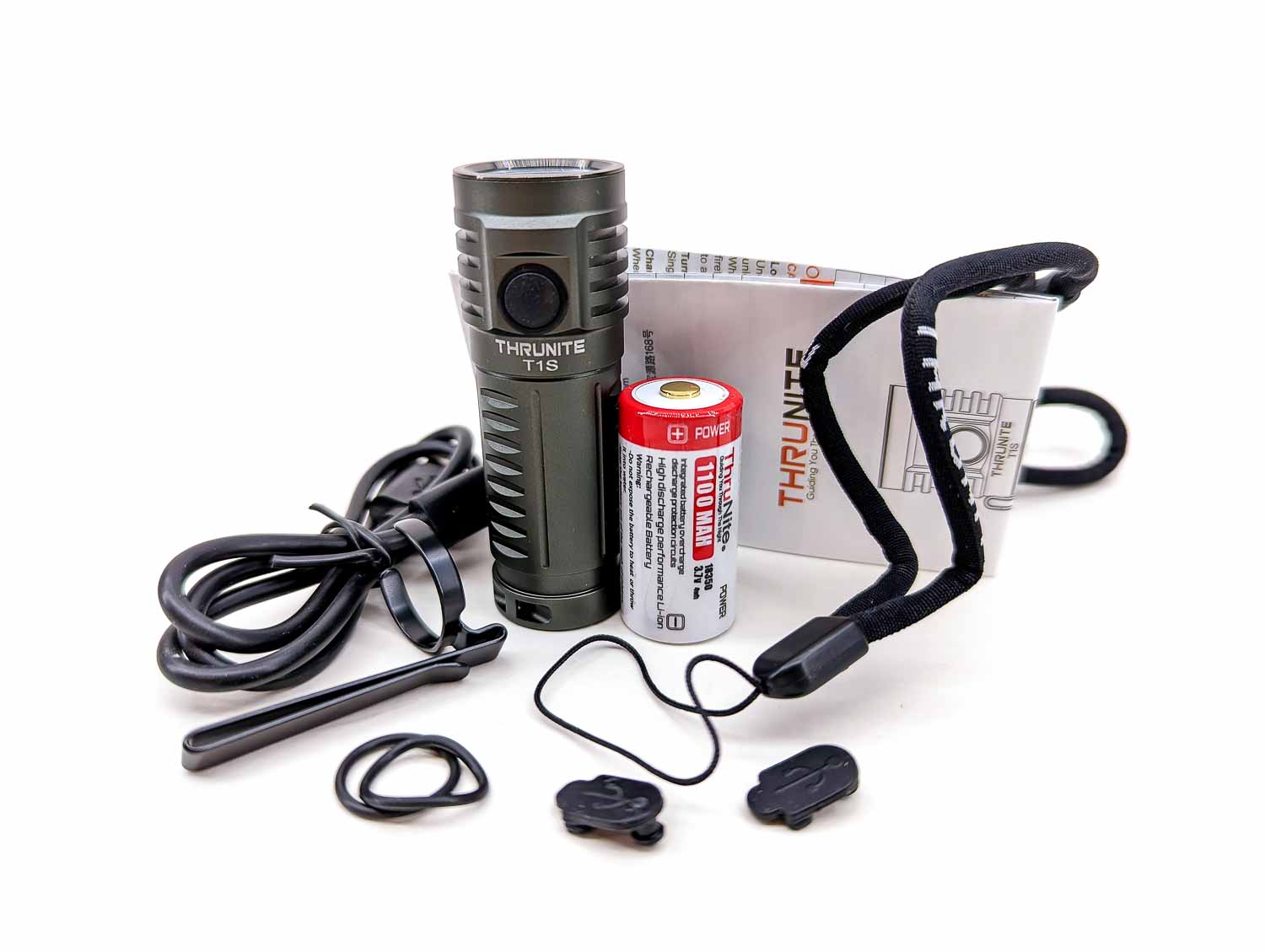
Flashlight in use and use cases
The ThruNite T1S is an EDC light. That comes with some trade-offs depending on your use-case. I would consider it to be quite small. That’s very convenient for stowing the T1S in your pocket, but that also means that due to the limited length, the button is on the side of the head amongst the heatsink fins. Speaking of the button, it is rather small and flat. In my experience, that means it can take a moment to locate the button (oh is that it? nope, that’s the charging cover). But its design also means that it’s less prone to accidental activation in your pocket. I carried the ThruNite T1S in my jeans pocket for a week, not locked out, and never once did I have it turn on.
There’s no real knurling on the T1S, but rather, the battery tube has three groups of channels cut into it. Between those and the heatsink on the head, I didn’t have any trouble with losing my grip on the light. The tail of the light is nearly perfectly flat, making it super stable for tailstanding. The tail is also home to a fairly strong magnet which is pretty handy for positioning it on nearby ferrous surfaces. The clip attaches around the tail area and stays firmly in place. It’s of the two-way variety and can be pretty handy. I clipped it onto my jeans every now and then which was a nice reassurance of it not going anywhere, but it takes some extra effort as the end of the clip hugs the body of the light very close.
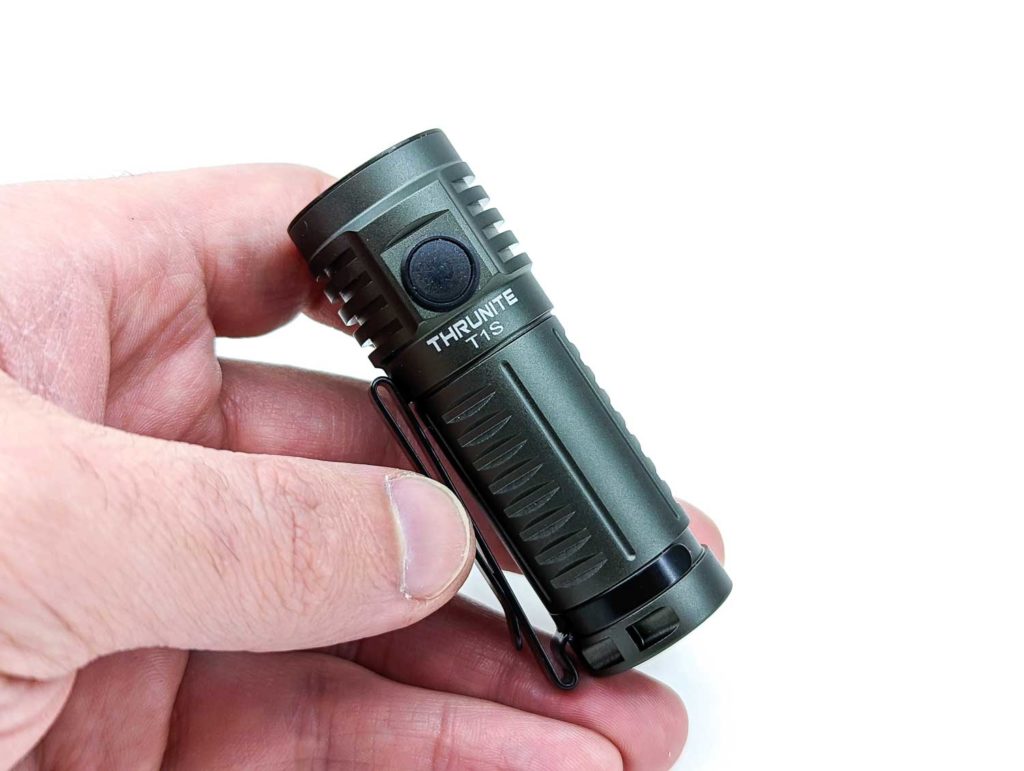



Build Quality, and Warranty
The T1S’s body is machined from 6061-T6 aluminum and is finished with Type III Hard Anodizing. My particular sample is ThruNite’s Metal Grey color and it looks great – not flashy, but a pleasant departure from the usual black (which is also an option). The anodizing is clean and even with no apparent flaws. There is only one set of threads – where the body tube screws onto the head. The threads are smooth and square-cut. The ThruNite T1S feels really solid and well put together.
ThruNite’s warranty policy is:
- 30 days return/replacement if you’re not satisfied with the product
- 24 months replacement for defects
- Lifetime repair coverage, customer is responsible for the cost of parts and freight
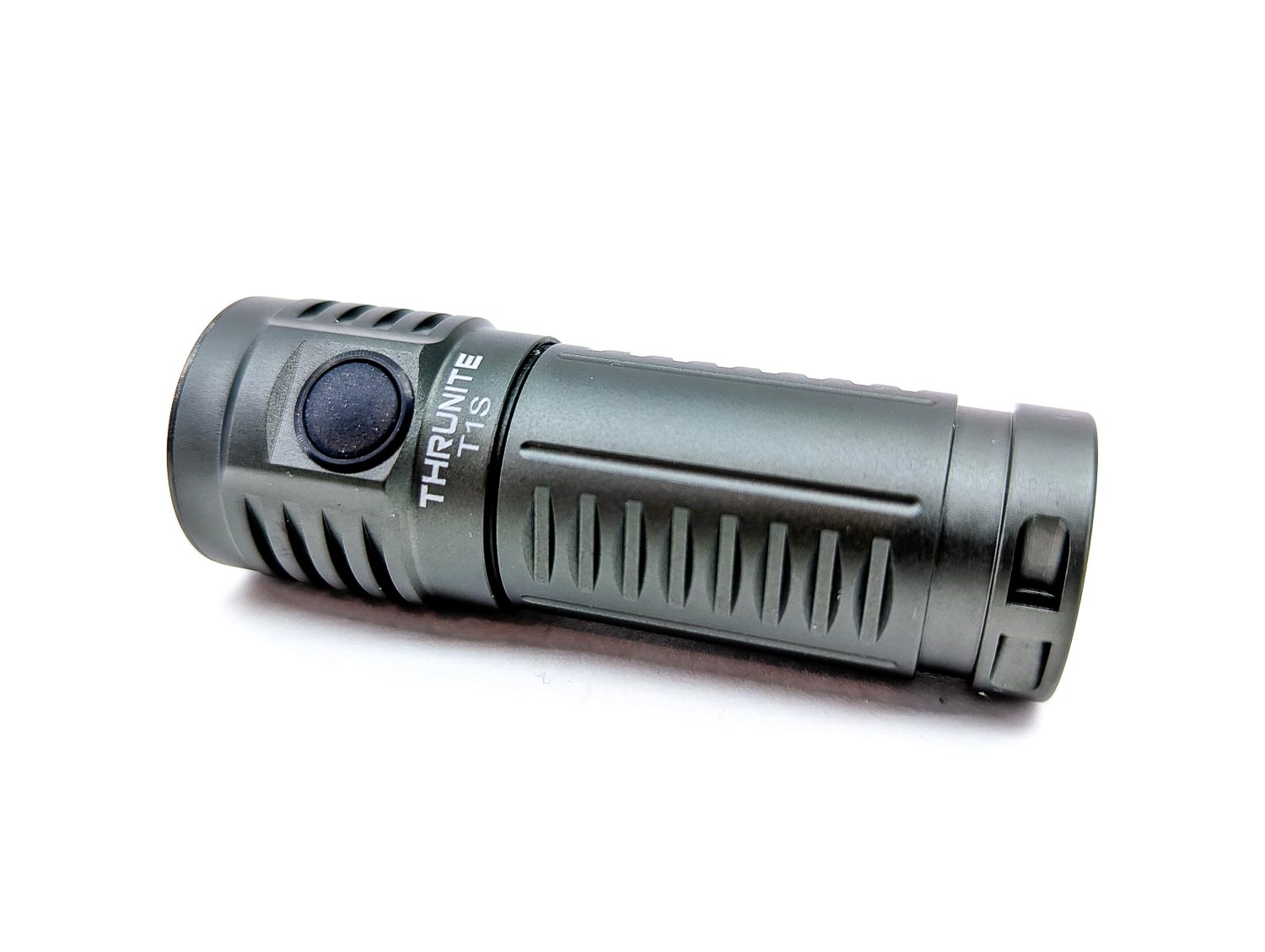
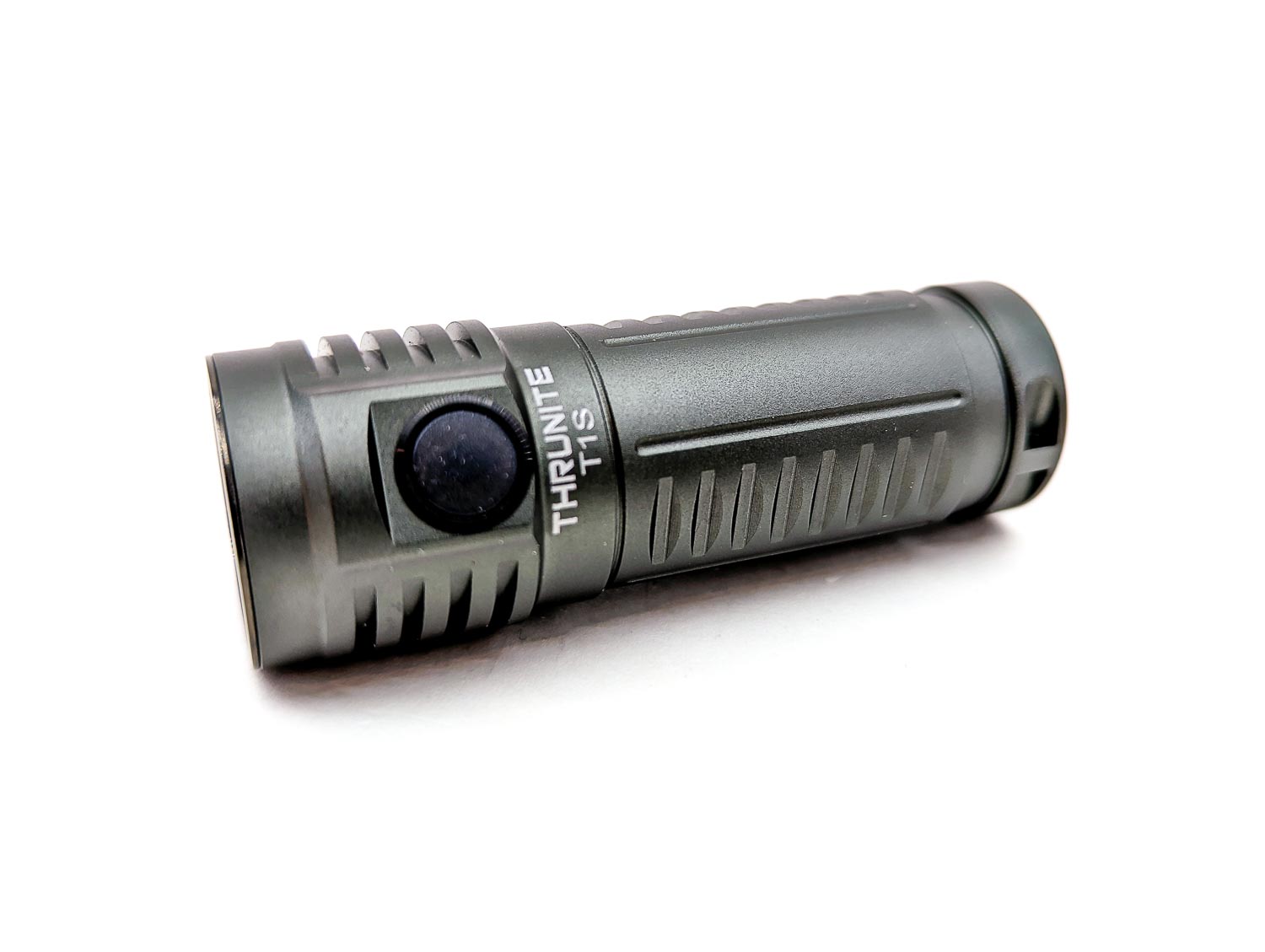
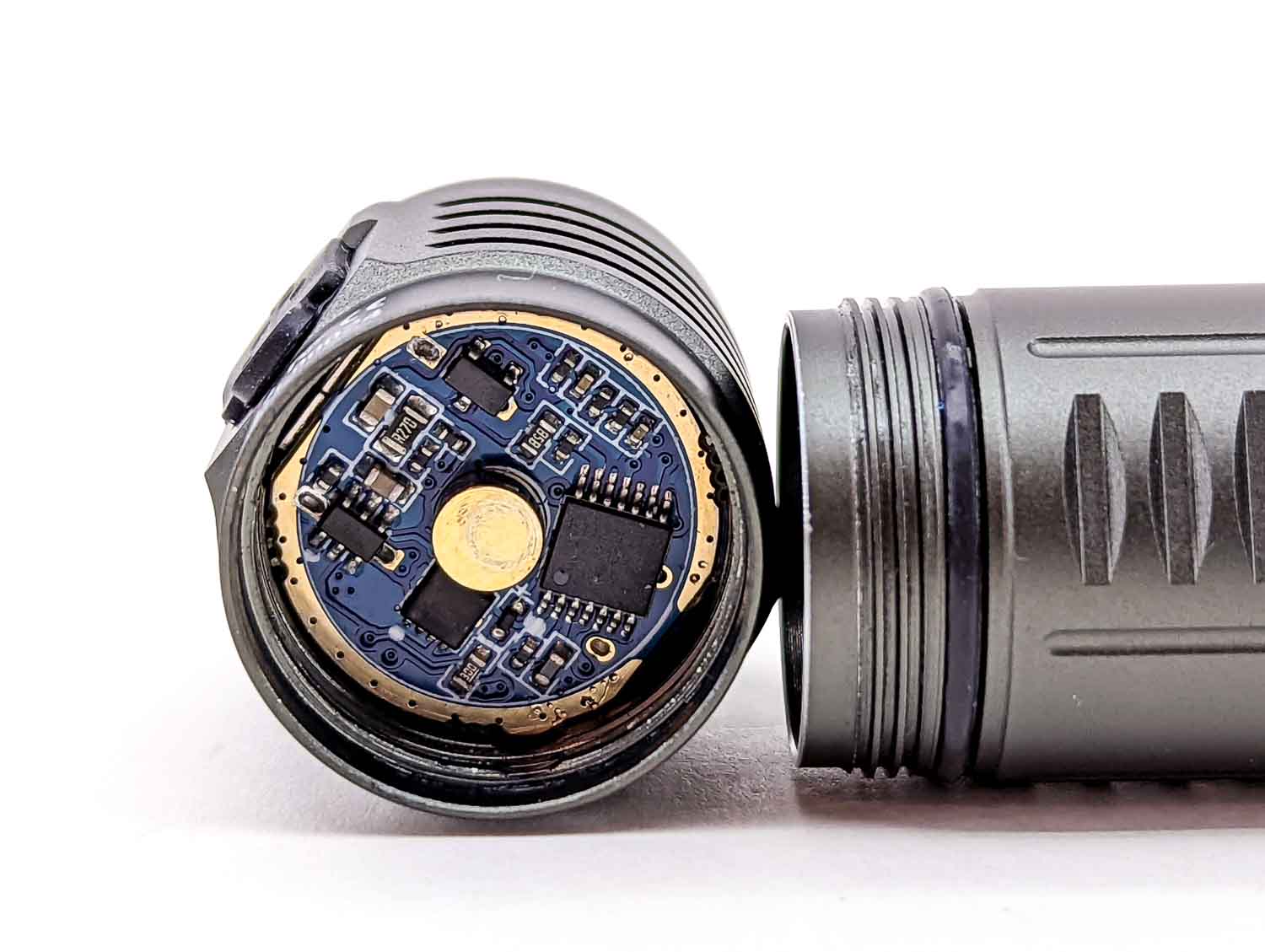

LED, Lens, Bezel, Beam, and Reflector
The business-end of the ThruNite T1S is where you’ll find one of the biggest changes over its predecessor, the T1. The T1 featured a Cree XHP50 in a short orange-peel reflector. Those have gone out the window, to be replaced by a Luminus SST-40 and a TIR optic. Like many of ThruNite’s offerings, the T1S is listed as having both Cool White and Neutral White options, though sometimes it seems like the NW configurations might not actually exist. As expected, this sample is the Cool White version.
The Luminus SST-40 has become very prominent over the past couple of years. It’s capable of over 2000 lumens, has high efficiency (lumens per watt), and is footprint-compatible with existing XM-L2 boards. On the downside, it’s only available in 70 CRI and the tints have been known to be above the BBL line (read: slightly green). Overall, it’s a pretty decent LED. As stated below, I measured the CRI around 61 which seems a bit low especially given that the SST-40 (to my knowledge) only comes in 70 CRI. The Opple is a nice but not expensive device – perhaps it struggles with measuring this LED accurately, or perhaps there’s something else going on.
The LED is hidden beneath a throwy TIR optic. The optic itself is a bit concave and there is no glass to cover it. That arrangement is held in place by a thin, press-fit bezel that is also a metal grey color but is different from the rest of the body. I’d say it looks like it might be stainless steel, but I don’t have anything to back that up.
Measurements from my Opple Light Master with the T1S in High mode:
- CCT: 5221K
- CRI: 60.5 (Ra)
- DUV: +0.0153 (slightly green)
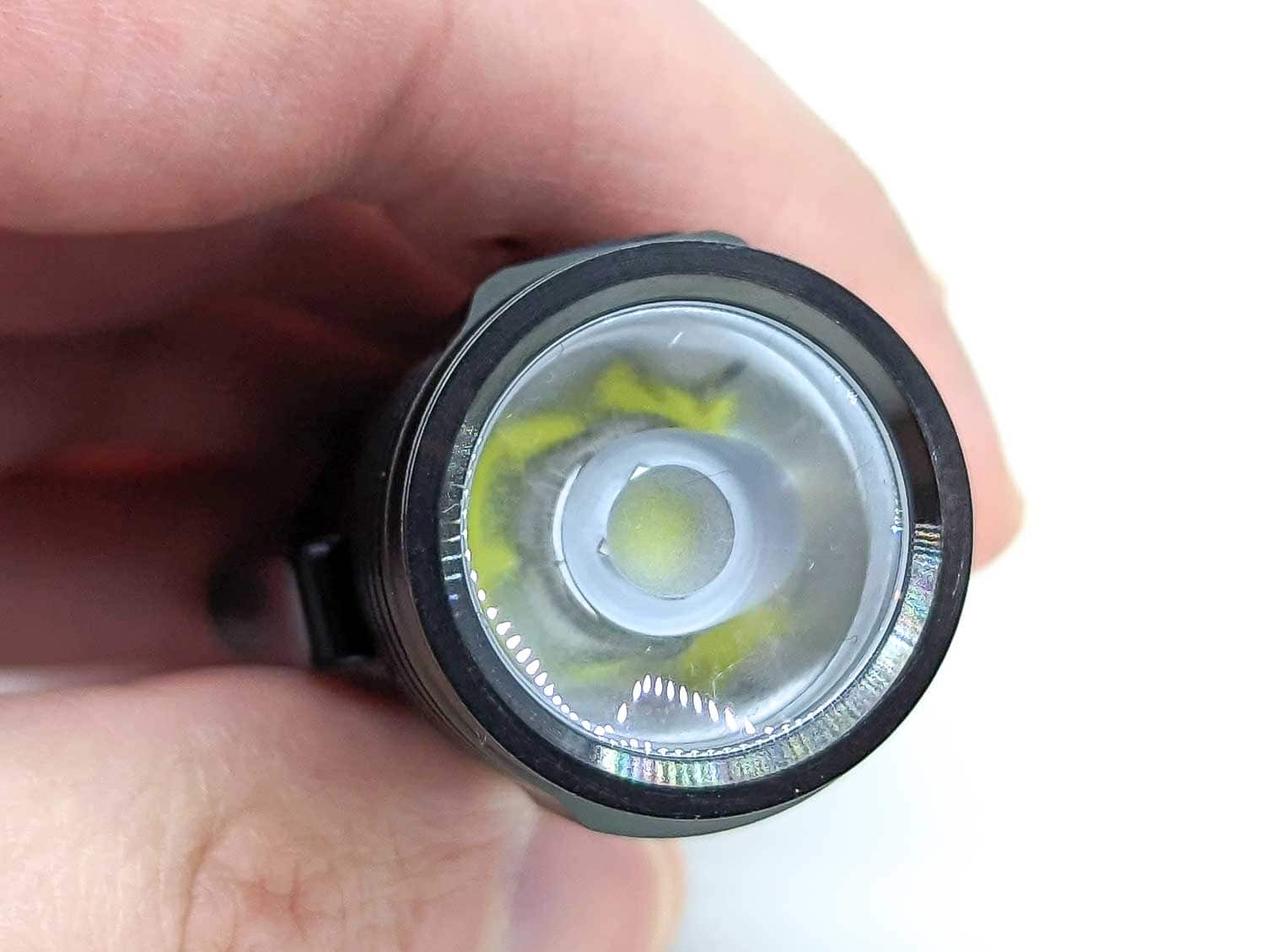

Dimensions and size comparison
- Length: 69.5 mm / 2.74 inches
- Head diameter: 26.5 mm / 1.04 inches
- Body diameter: 22.0 mm / 0.87 inches
Weight:
- Without cells: 43 grams / 1.5 oz.
- With cells: 71 grams / 2.5 oz.
Flashlight comparison
As you can see from these pictures, the T1S is very compact
18350-based EDC lights, left to right: Convoy S2+ (short tube), ThruNite T1S, Sofirn SC31 Pro (short tube)
EDC lights, left to right: Lumintop Tool AA 2.0, Reylight TI LAN, Sofirn SP10 V2, ThruNite T1S, RovyVon S3
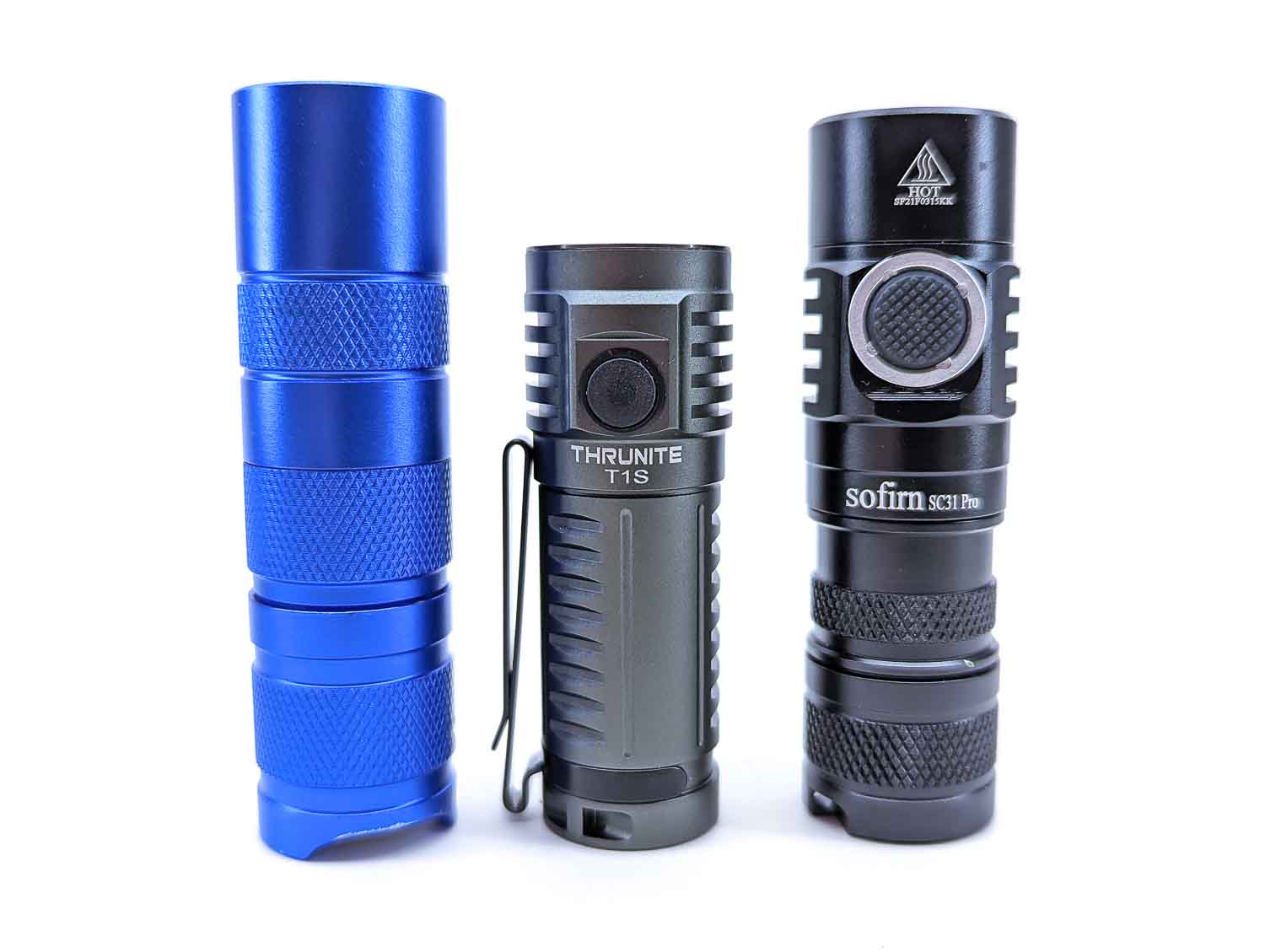
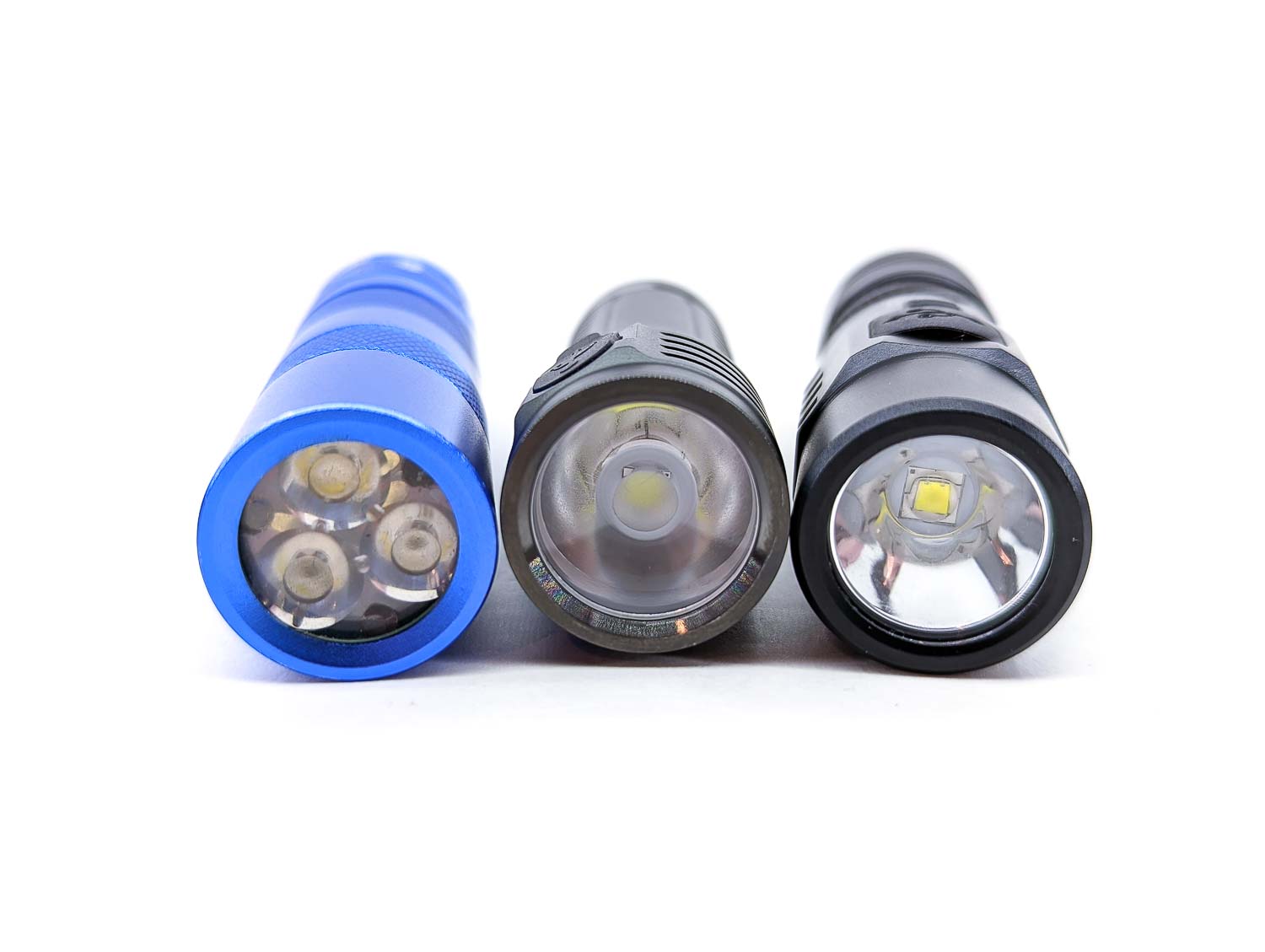
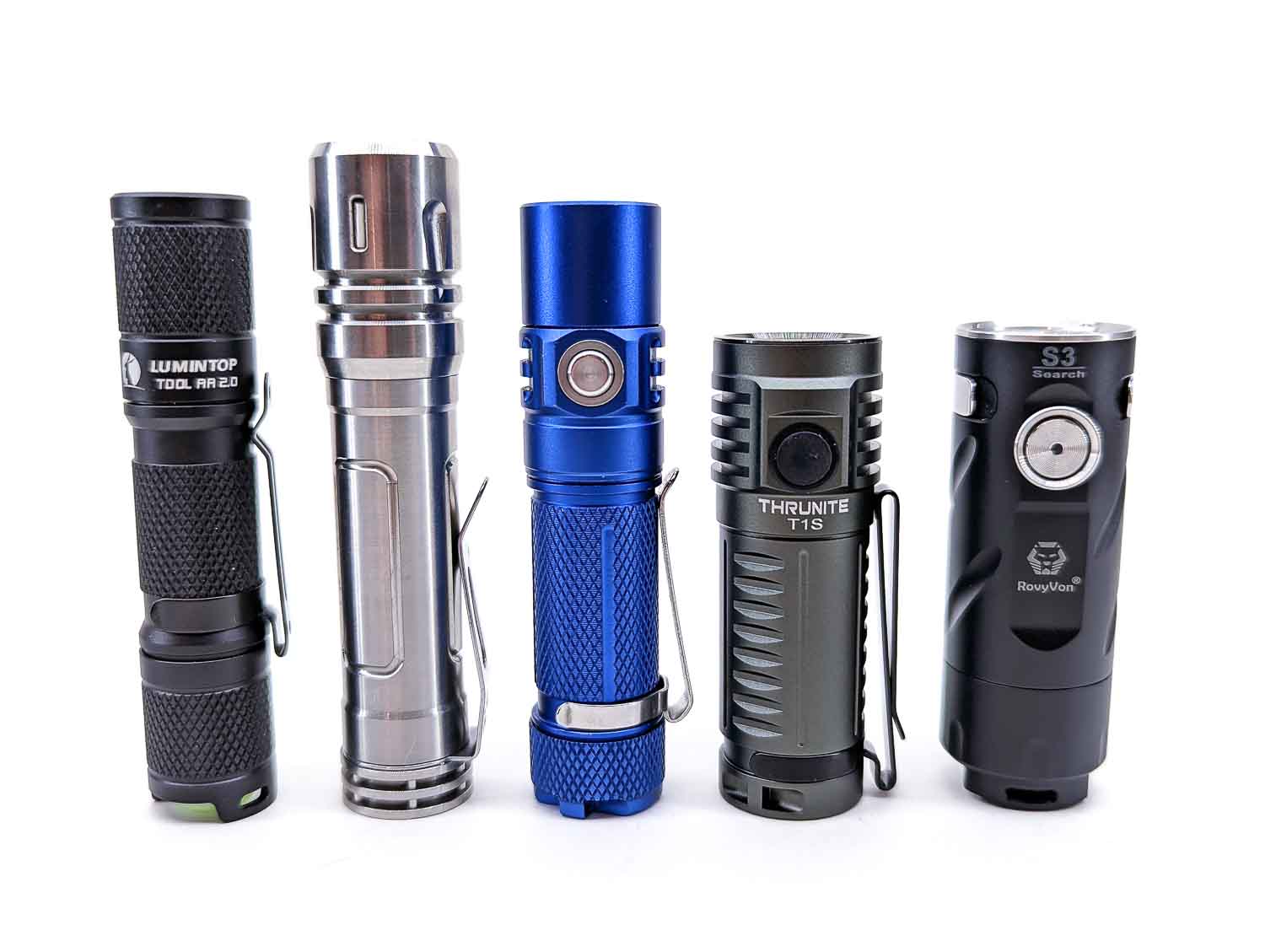
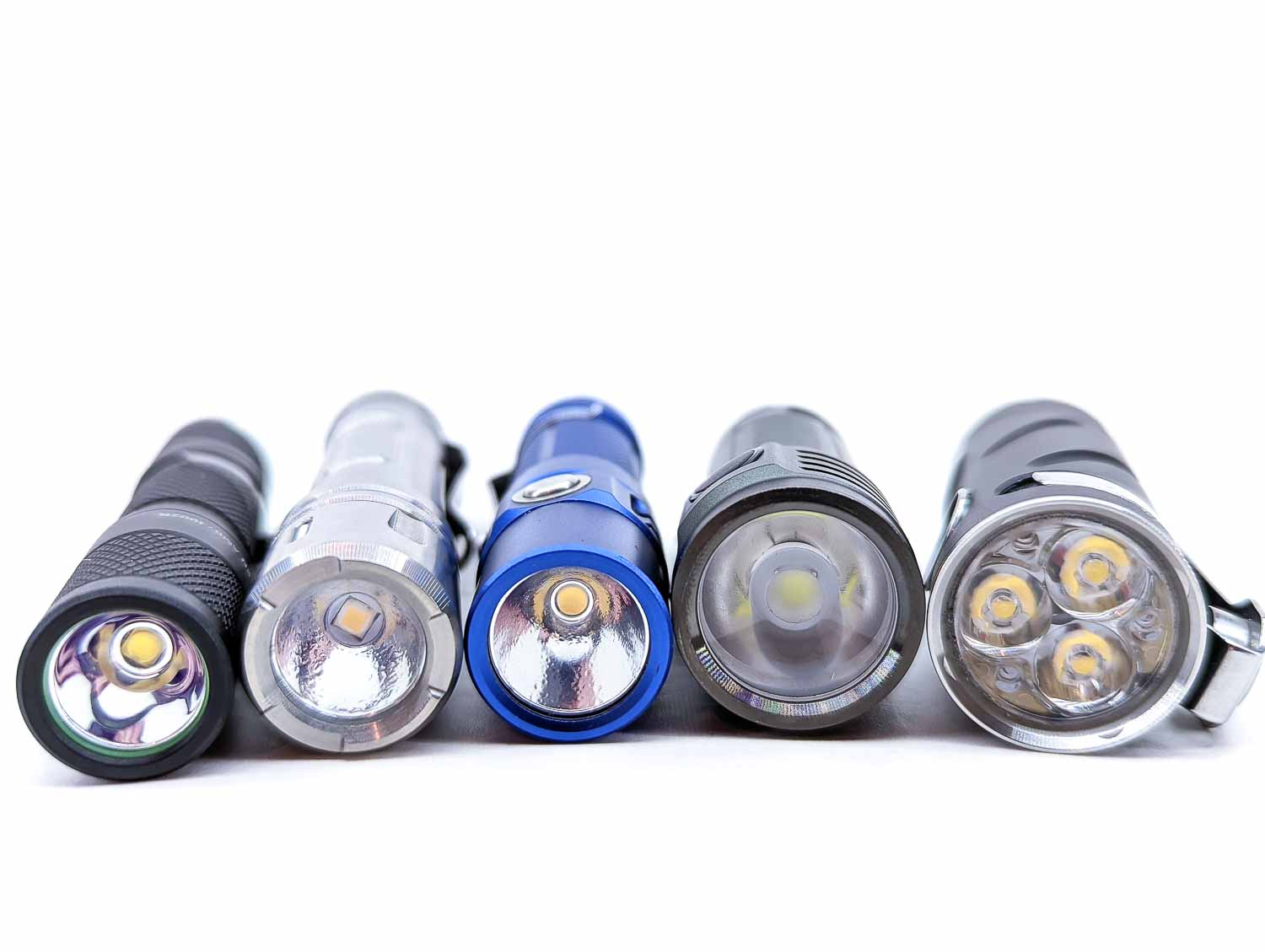
Driver & User Interface:
The UI of the ThruNite T1S is really easy to pick up, and feels pretty familiar as far as e-switch UI’s go. To me, that’s great – because the fewer interfaces I have to memorize, the easier it is to use a light.
Available modes: Firefly, Low, Medium, High, Turbo
From OFF:
- Press and Hold: firefly mode
- Single click: last used mode (low, med, or high)
- Double click: turbo
- 3 clicks: strobe
From ON:
- Press and Hold: change modes (low > med > high)
- 1 click: turn off
- Double click: turbo
- 3 clicks: strobe
Mode memory:
- Yes, memorizes low, med, or high
Shortcuts:
- To Firefly: press and hold from off
- To Turbo: double click (from off or on)
- To Strobe: triple click (from off or on)
Low voltage warning:
- The LED indicator shows the battery status:
- Blue: 21 – 100% (3.2 – 4.2V)
- Red: 11 – 20% (2.9 – 3.2V)
- Flashing Red: 1 – 10% (2.6 – 2.9V)
- Off: 0% (0 – 2.6V)
Strobe/blinkies
- There is a strobe mode, accessible from a triple click whether off or on
Lock-out mode:
- Yes, there is an electronic lock-out mode!
- To activate it, enter Firefly mode (press and hold from off) and then do another press and hold
- To exit the Lock-out mode, hold the switch for 2 seconds
PWM
- There is no PWM in any mode
Batteries & Charging
The ThruNite T1S comes with a ThruNite-branded 1100 mAh protected 18350 button-top battery. That battery seems to be about the longest that will comfortably fit. I also tried a flat-top Keeppower 1200 mAh cell (UH1835P) and that fit perfectly fine.
Aside from the LED & optics change, to me, the other biggest upgrade from the T1 model is the switch from micro-USB to USB-C charging. Finally! I’m at the point where I’ve sworn off buying any lights that come with micro-USB charging. This kit comes with a USB-A to USB-C cable for charging purposes. That worked great and I observed a 0.6 amp (3.1 watt) charge rate, filling up the battery in 2 hours and 3 minutes. The charge stopped at 4.18 volts, at which point the indicator switched from red to blue. I also tried charging the T1S with my USB-PD charger and a USB-C to USB-C cable and that worked flawlessly.
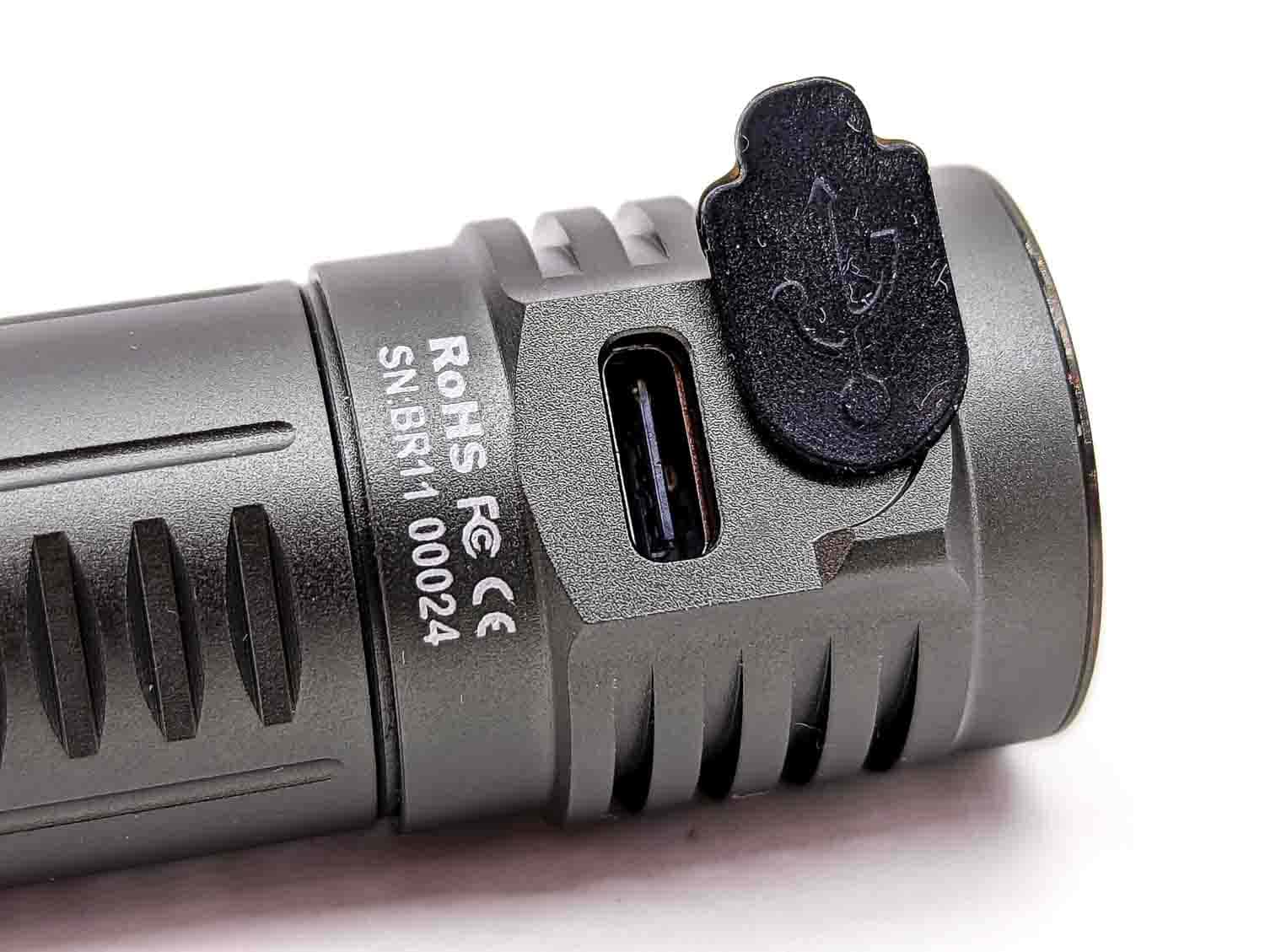
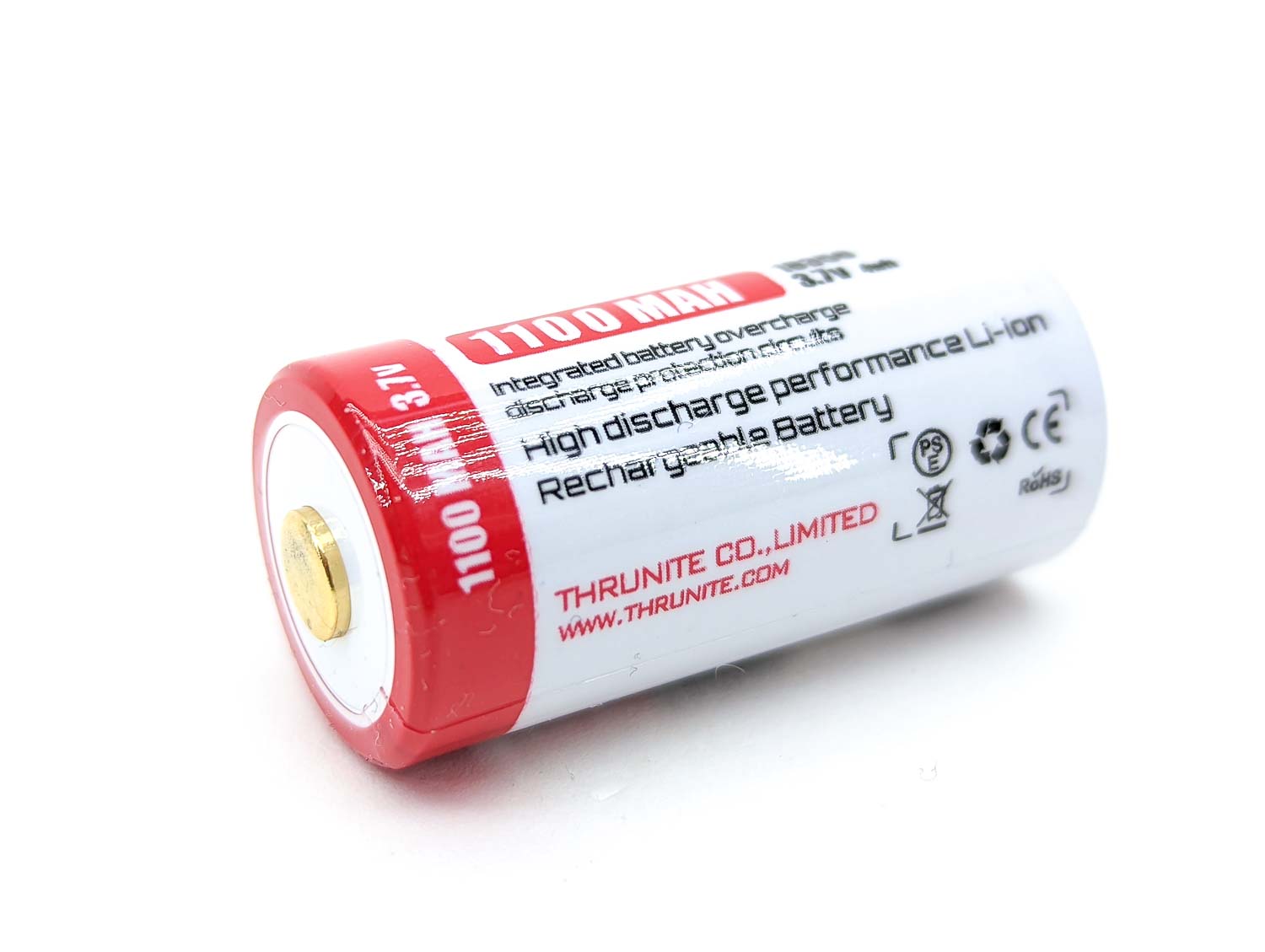
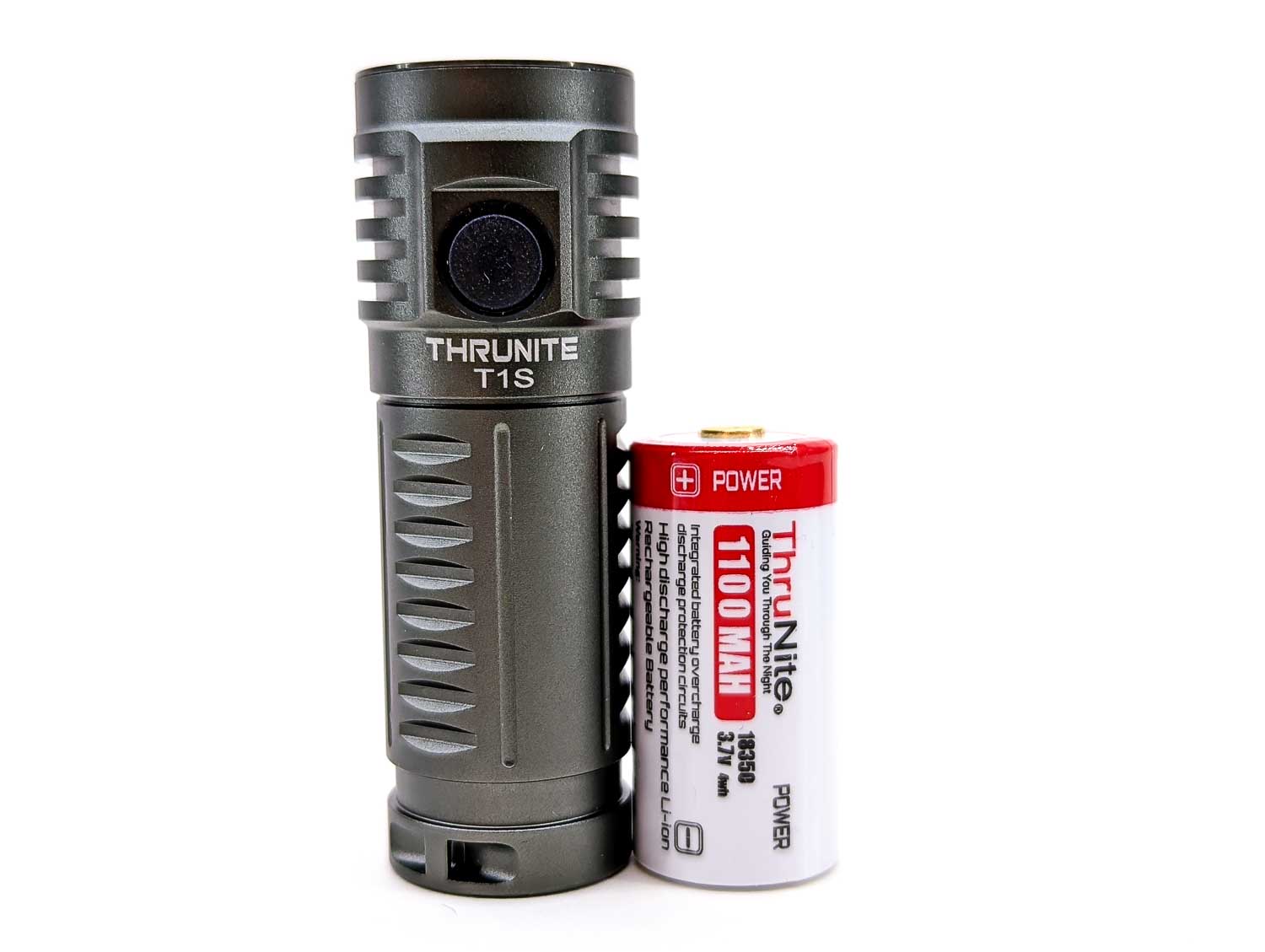
Performance
For current measurements, an ANENG AN8008 multimeter and UNI-T UT210E clamp meter were used. Lux was measured by a UNI-T UT383 BT at 5 meters. Lumens were measured in a homemade lumen tube using a TSL2591 sensor, calibrated with a Maukka calibration light. Testing was performed with the included 18350 battery.
Lumen measurements (for each mode)
| Mode | Amps at start | Specs | turn on | 30 sec | 10 minutes |
|---|---|---|---|---|---|
| Moon | 1.3 ma | 0.5 | 0.4 lm | – | – |
| Low | 25 ma | 7 | 15 lm | 15 lm | 15 lm |
| Med | 172 ma | 94 | 106 lm | 106 lm | 104 lm |
| High | 860 mA | 407 | 429 lm | 418 lm | 394 lm |
| Turbo | 1.8 A | 1212 > 317 | 1255 lm | 1166 lm | 324 lm |
Parasitic drain:
- 21 µA
Runtime graph
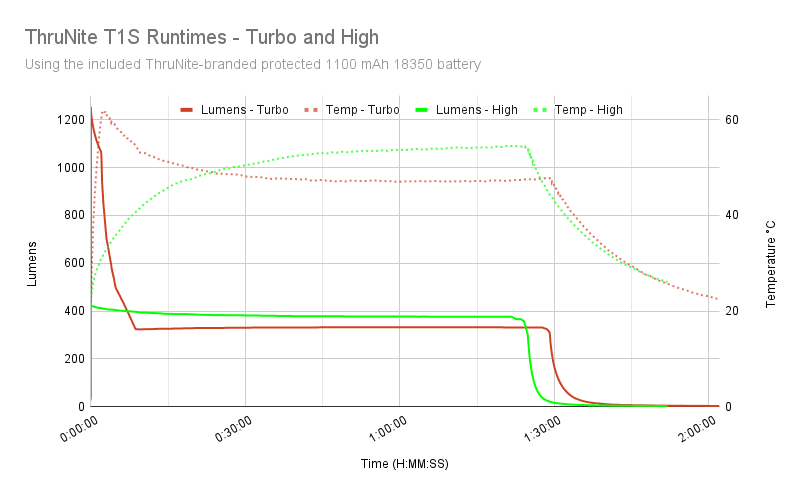

Turbo mode started out at 1255 lumens and dropped slowly over the first 2 minutes, at which point it was at 1065 lumens. Over the next 7 minutes, output ramped down to 324 lumens which is where it stayed until output began dropping out fast at 1 hour and 29 minutes. It crossed the 10% output threshold at 1 hour and 30 minutes. The maximum temperature was 62°C, though only at the beginning of the run – most of the time, the temperature was around 47°C. At the end of the test, I measured the battery voltage – it was at 0V. After a brief heart attack, I remembered it was a protected cell. After a second of charging to reset the protection, I saw that it was at 2.82 volts. I see that ThruNite lists the T1S’s voltage range going down to 2.7V, so if there’s LVP it’s just a bit lower than what the battery was protecting against.
High mode was fairly uneventful. It started out at 429 lumens and hung around 379 lumens for most of the run. Output began dropping at 1 hour and 24 minutes, crossing the 10% threshold at 1 hour and 27 minutes. The max temperature was 54°C.

If High mode was uneventful, Medium was delightfully dull. It began at 106 lumens and pretty much stayed there until it began dropping quickly at 6 hours and 5 minutes, crossing the 10% threshold at 6 hours and 20 minutes. The max temperature was 29°C.
Throw numbers:
Throw was measured at 5 meters
| Mode | Specs | Candela measured | Meters | Yards |
|---|---|---|---|---|
| High | – | 3,500 cd | 118 | 129 |
| Turbo | 8,460 cd | 10,375 cd | 204 | 223 |
Beamshots
Beam shots of the building are taken at 15 m (16 yd) using a Pixel 6 set to ISO 200 with 1/10 second exposure time.
Beam shots of the playset are taken at 30 m (33 yd) using a Pixel 6 set to ISO 200 with 1/2 second exposure time. The trees in the background are around 65 m away.
- ThruNite T1S
- ThruNite Archer 2A V3
- Lumintop Tool AA
- Wuben E6
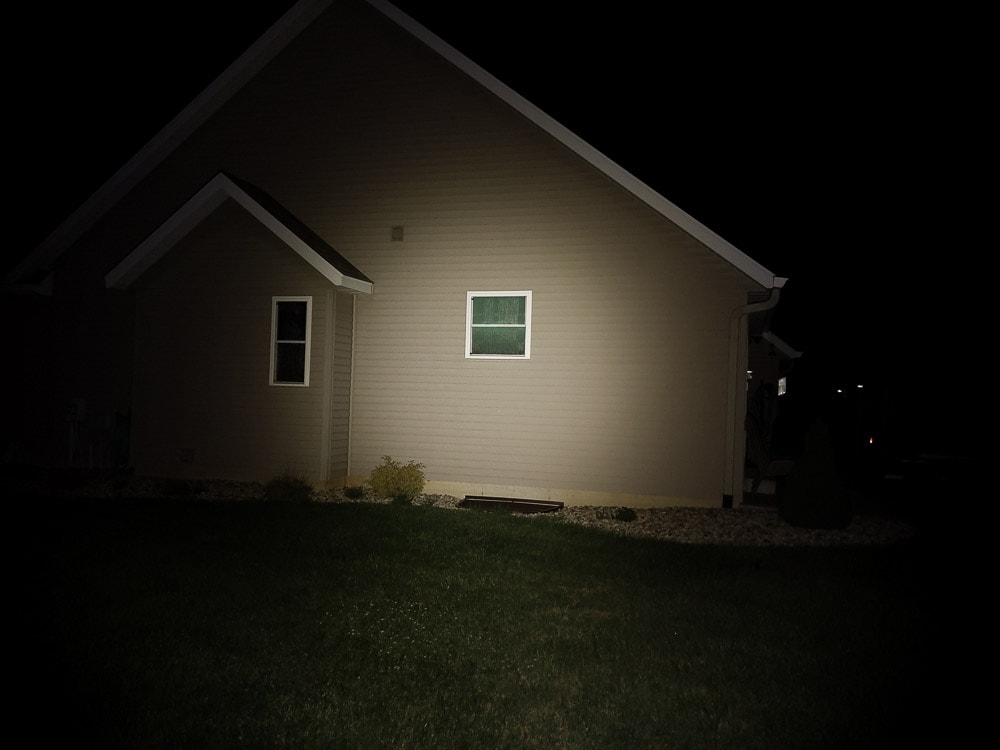
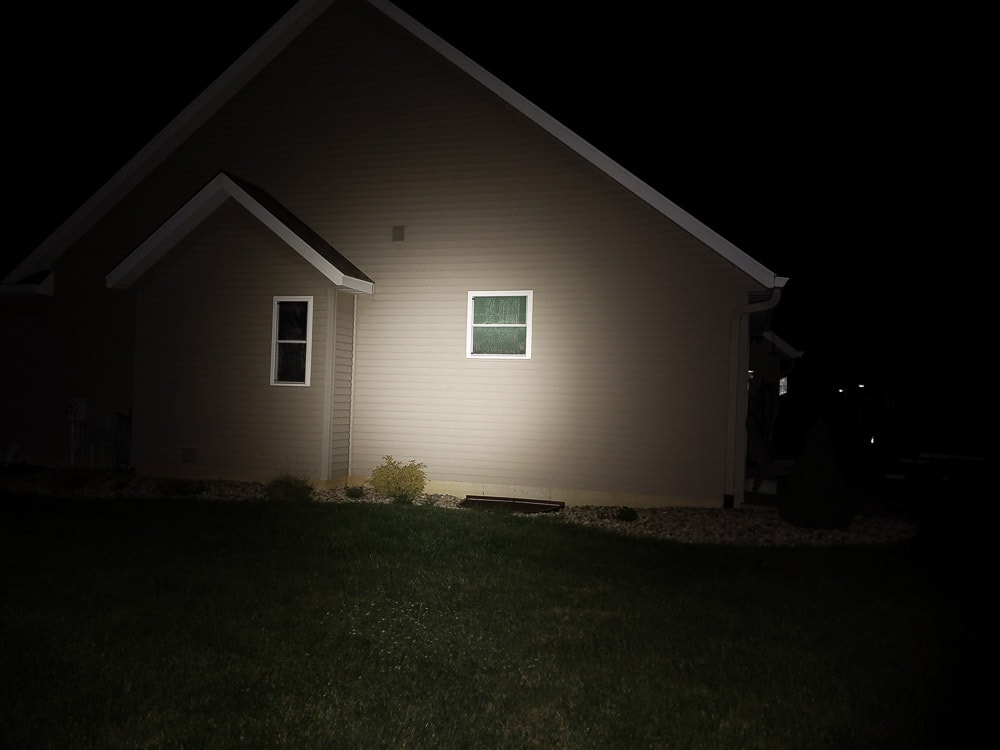
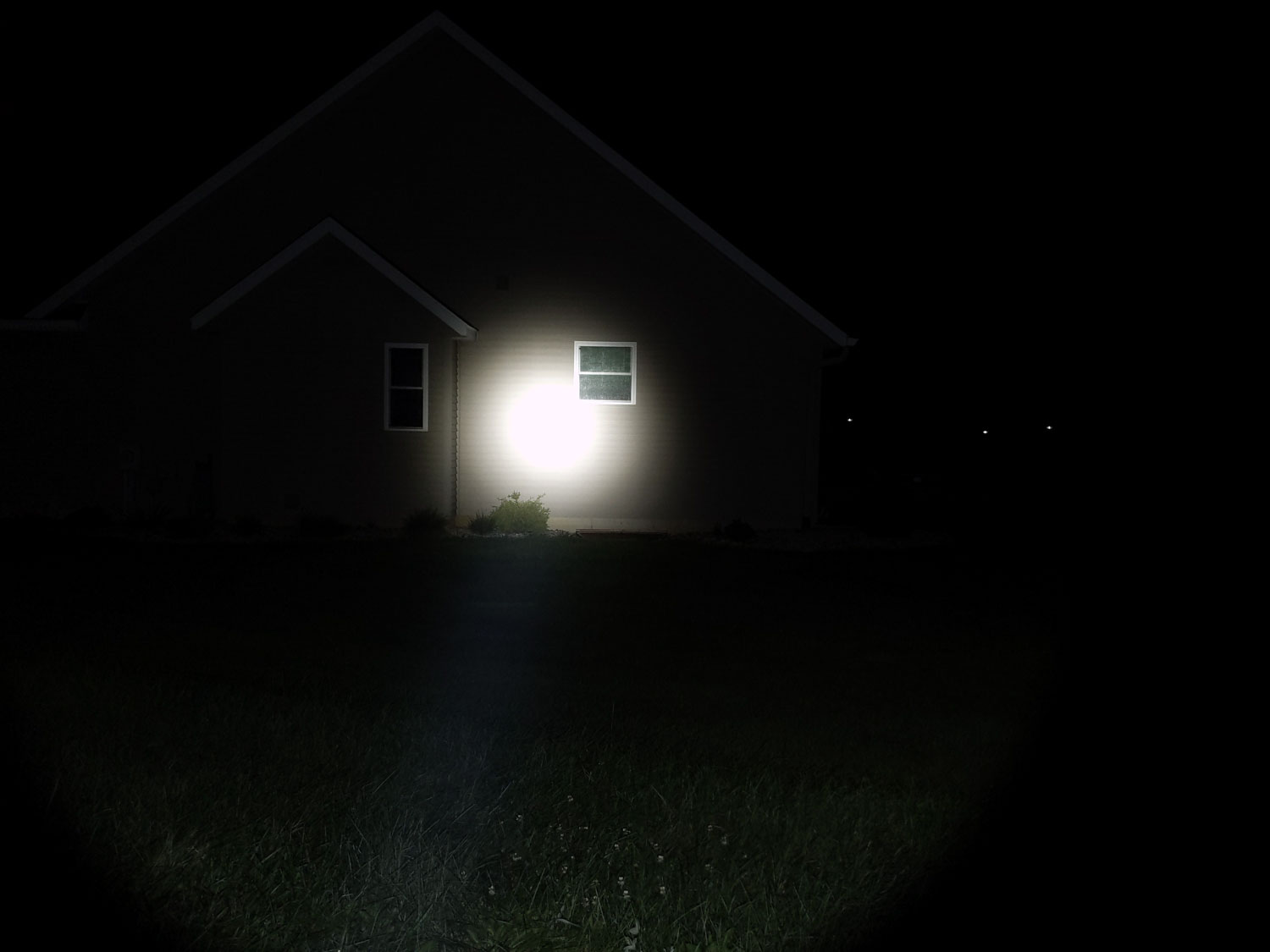
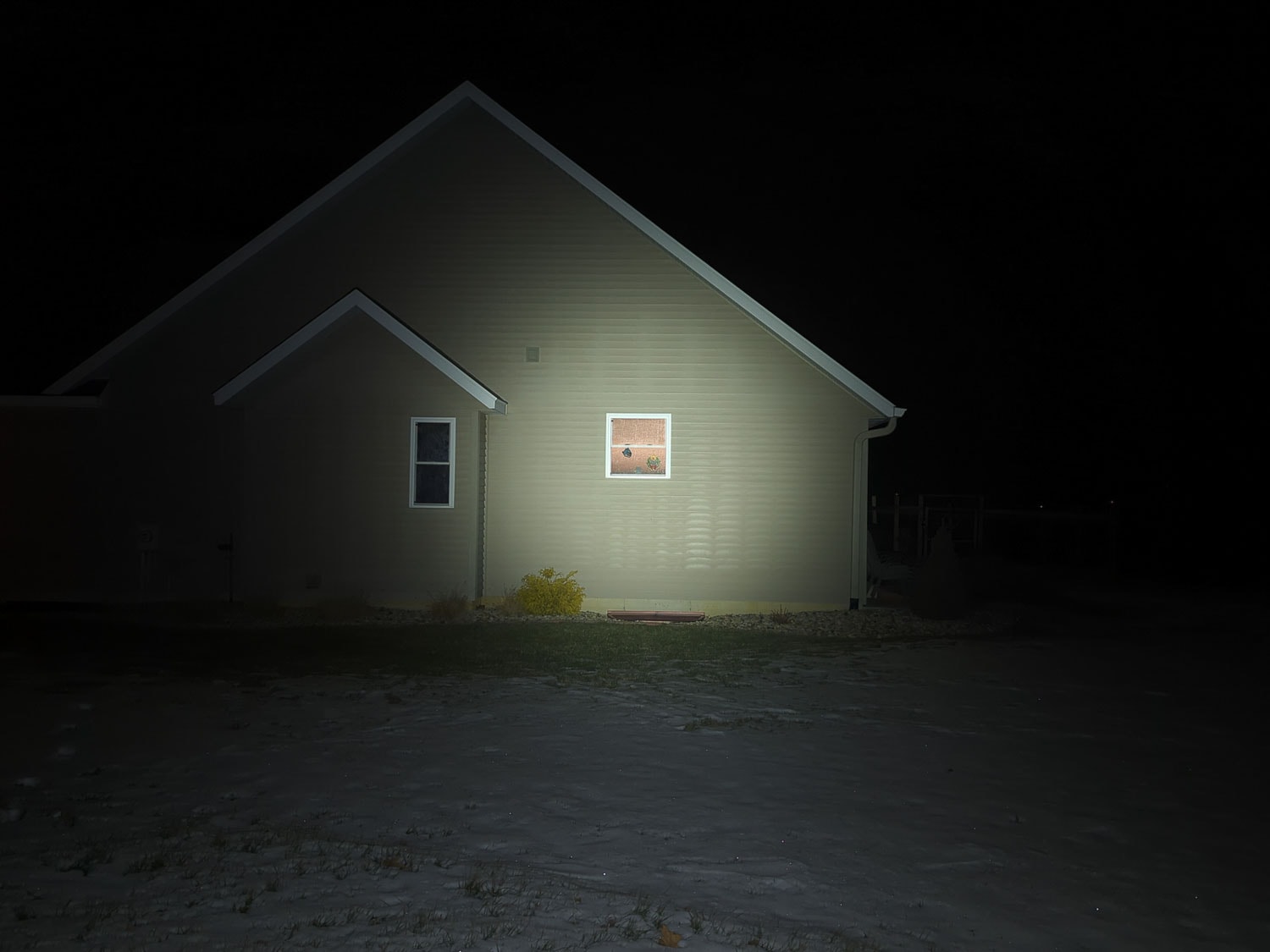
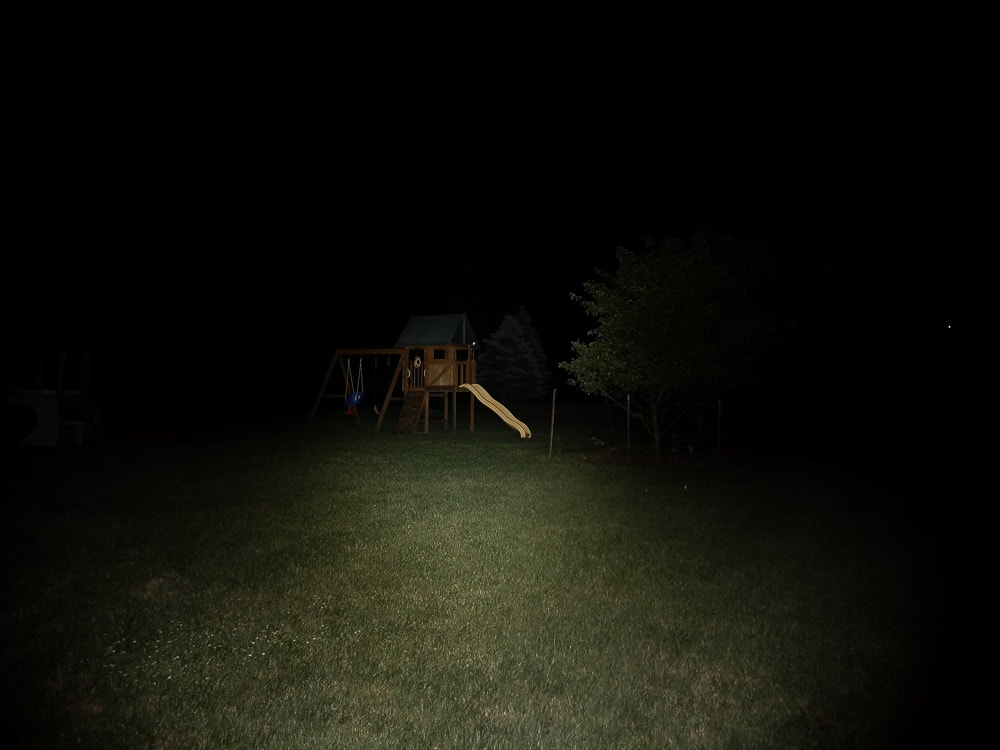
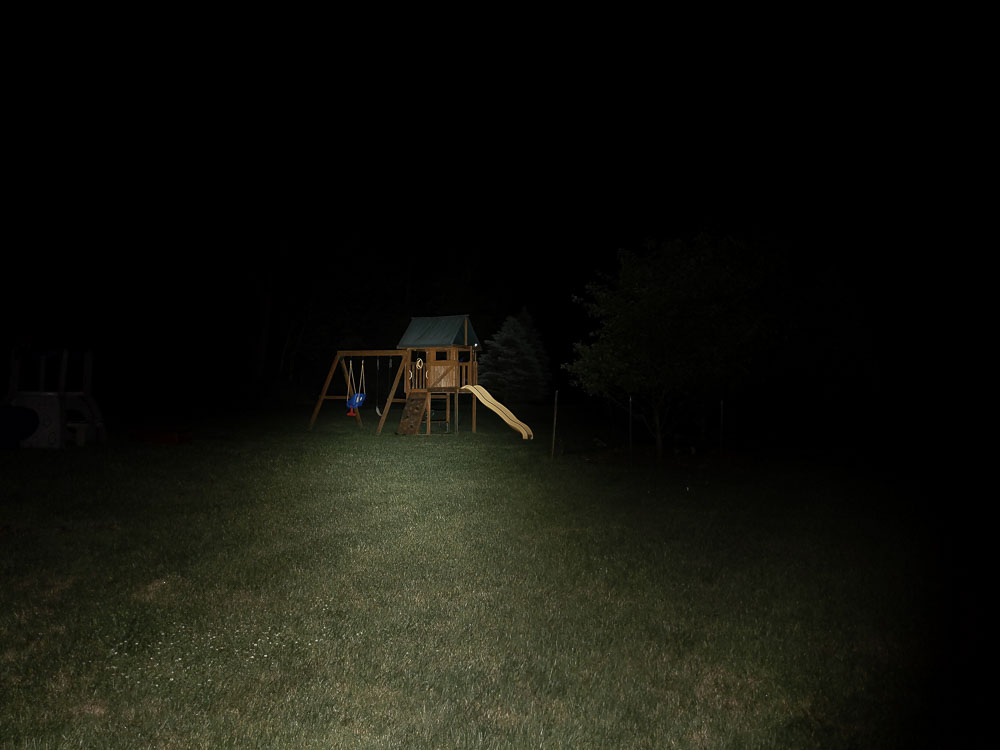
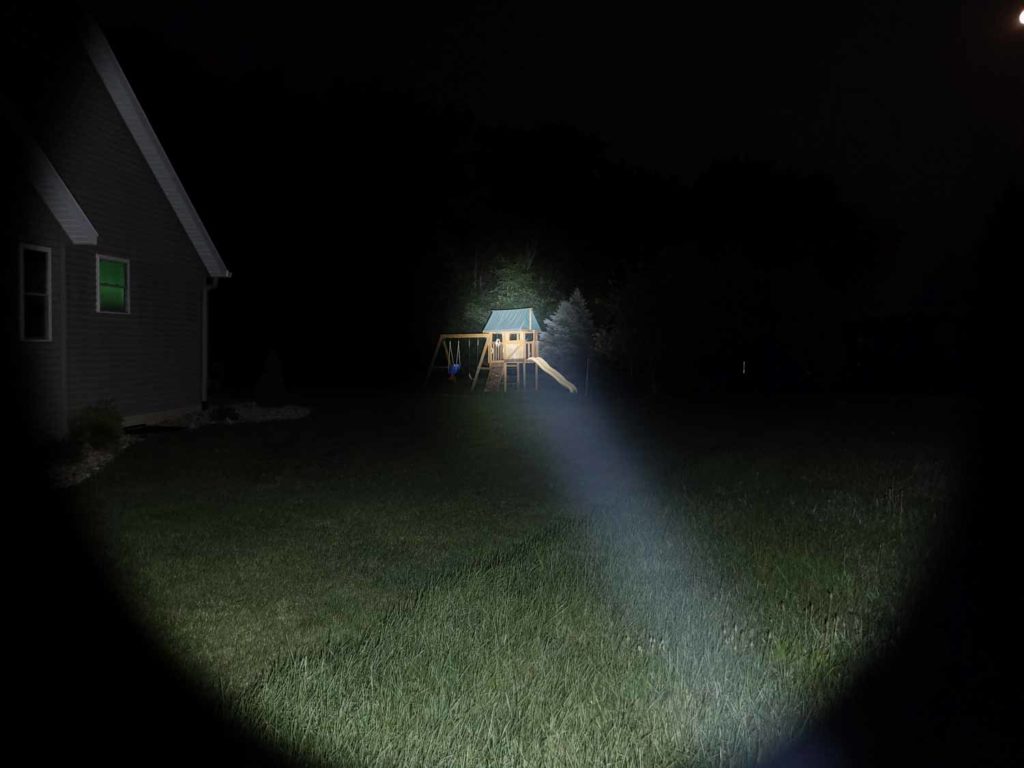

Disclaimer: This flashlight was sent to me for review at no cost by Thrunite. I have not been paid to review, nor have I been holding back on problems or defects.
Final Verdict
Pros
- Highly compact
- Throwy for its size
- USB-C charging
- Very nice UI
- Attractive metal grey finish
- Full kit at a good price
- Fairly neutral CCT
Cons
- Button can be hard to find sometimes
- Low CRI
Explanation on star ratings:
1: Avoid: my phone flashlight would be a better choice – 2: Poor: significant defect or issues; almost unusable – 3: Average: some defects or issues; but still usable 4: Good: recommended (minor issues) – 5: Great: highly recommended

5 stars: ★★★★★
I’m going to be honest – I had to dig deep to come up with any “cons” for the ThruNite T1S. This light is pretty much everything that I personally look for in an EDC flashlight: very compact, good UI, USB-C charging, and it looks pretty sharp too. I think ThruNite has packed a lot of value into this small package and I was pleasantly surprised by the price. The ThruNite T1S has ridden in my pocket for the past week or two and I think it’ll stay there for a while.
Thrunite T1S For Sale
1lumen selects and reviews products personally. We may earn affiliate commissions through our links, which help support our testing.